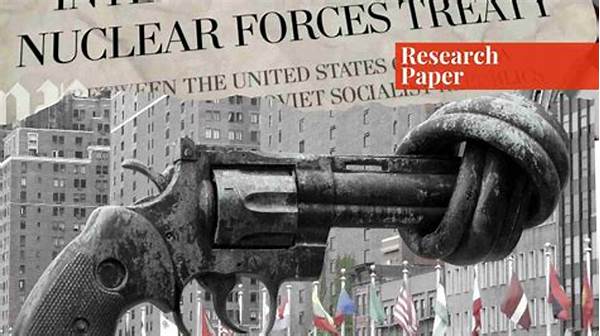In the contemporary international arena, global arms control agreements serve as vital mechanisms for promoting peace and stability. They aim to regulate and reduce the proliferation of weapons, particularly nuclear arms, to ensure global security. These agreements involve multilateral cooperation and diplomatic negotiations among nations, each with the common goal of mitigating the threats posed by excessive armaments. Through structured frameworks and legally binding treaties, countries engage in commitments that pave the way for disarmament, arms reduction, and non-proliferation. As global dynamics evolve, these agreements continue to face challenges and adaptations, reflecting the complex interplay of international relations and security policies.
Historical Overview of Global Arms Control Agreements
The history of global arms control agreements is rich with pivotal moments that have shaped modern security protocols. One notable instance is the Treaty on the Non-Proliferation of Nuclear Weapons (NPT), enacted in 1970, which forms the cornerstone of nuclear disarmament efforts. Its primary objectives include preventing the spread of nuclear weapons, promoting peaceful uses of nuclear energy, and achieving nuclear disarmament. Additionally, the Strategic Arms Reduction Treaty (START) between the United States and the Soviet Union marked significant progress in reducing the number of nuclear warheads during the Cold War era. These historical frameworks have laid the groundwork for subsequent treaties and continue to influence current international arms control dialogue. The success of these global arms control agreements hinges on international cooperation and the enduring commitment of signatory states to adhere to established protocols for the greater good of global security.
Key Aspects of Global Arms Control Agreements
1. Treaty Obligations: These agreements impose legally binding obligations on signatories to limit or reduce specific categories of weapons, thereby contributing to international peace.
2. Verification Mechanisms: Robust verification mechanisms are integral to global arms control agreements, ensuring compliance and building trust among participating nations.
3. International Negotiations: The formation of such agreements requires complex international negotiations, balancing national interests and collective security concerns.
4. Disarmament Goals: A core aim of global arms control agreements is the progressive disarmament of weapons, particularly those of mass destruction, to reduce the risk of conflict.
5. Non-Proliferation Efforts: These agreements often emphasize non-proliferation, preventing the spread of weapons technology to additional states or non-state actors.
Challenges Facing Global Arms Control Agreements
Despite their importance, global arms control agreements face numerous challenges in the present international landscape. Geopolitical tensions, differing national priorities, and technological advancements pose formidable obstacles to forging and maintaining these agreements. Countries with nuclear capabilities often grapple with the dual imperatives of national security and international commitments. Similarly, non-nuclear states may perceive imbalances in treaty provisions, leading to critiques of inequality. Additionally, enforcement mechanisms sometimes lack the robustness needed to address violations effectively, undermining overall compliance. In the face of modern threats, including cyber warfare and emerging military technologies, adapting existing frameworks to incorporate new realities remains an ongoing challenge. To ensure the effectiveness of global arms control agreements, nations must remain committed to dialogue, trust-building, and multilateralism as foundational principles for future progress.
Implications for International Security
The role of global arms control agreements in international security is profound, affecting not only state actors but also regional stability and global peace. These agreements act as deterrents against the escalation of conflicts, providing a platform for dialogue and negotiation in times of crisis. By curbing the proliferation of weapons, they reduce the likelihood of armed confrontations and encourage peaceful resolutions. Furthermore, the cooperative nature of these agreements fosters an environment conducive to collective security initiatives and joint defense efforts. The efficacy of global arms control agreements also instills confidence within the international community, bolstering the belief in diplomatic solutions over militaristic approaches. As new security challenges emerge, upholding and enhancing these agreements will be critical to maintaining a stable and secure world order.
Future Prospects of Global Arms Control Agreements
Looking forward, the prospects for global arms control agreements are intertwined with both opportunities and challenges. Technological developments, such as artificial intelligence and autonomous weapons, necessitate innovative approaches to future agreements. The involvement of new actors, including rising powers and non-state entities, further complicates traditional negotiation dynamics. However, the increasing acknowledgment of the catastrophic consequences of unrestricted armament is likely to drive collaborative efforts. Strengthening existing treaties and establishing new frameworks that address emerging threats will be essential strategies. The commitment to transparency, dialogue, and verifiable compliance will determine the trajectory of global arms control efforts, shaping international security in the years to come.
Conclusion
In summary, global arms control agreements play a crucial role in the contemporary international order by advancing peace and reducing the risks associated with arms proliferation. They embody collective efforts by the global community to mitigate potential threats and promote security through disarmament and non-proliferation. Despite encountering obstacles such as geopolitical tensions and advancing technologies, the foundational elements of these agreements—legally binding commitments, verification mechanisms, and disarmament objectives—remain critical to their success. As the international arena continues to evolve, the future effectiveness of global arms control agreements will rely on sustained international cooperation, innovative policy adaptations, and a unified dedication to preserving peace and security worldwide.





